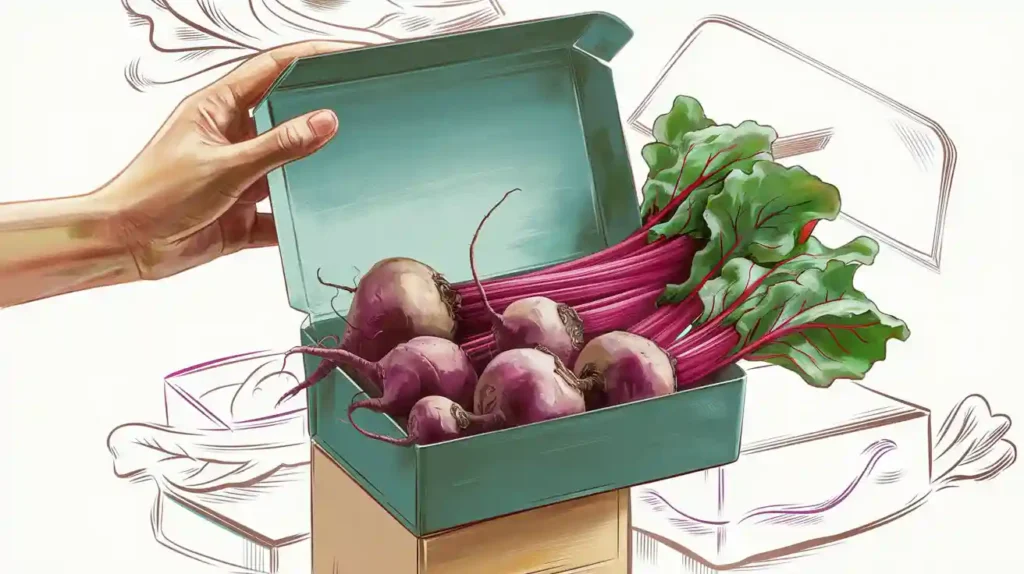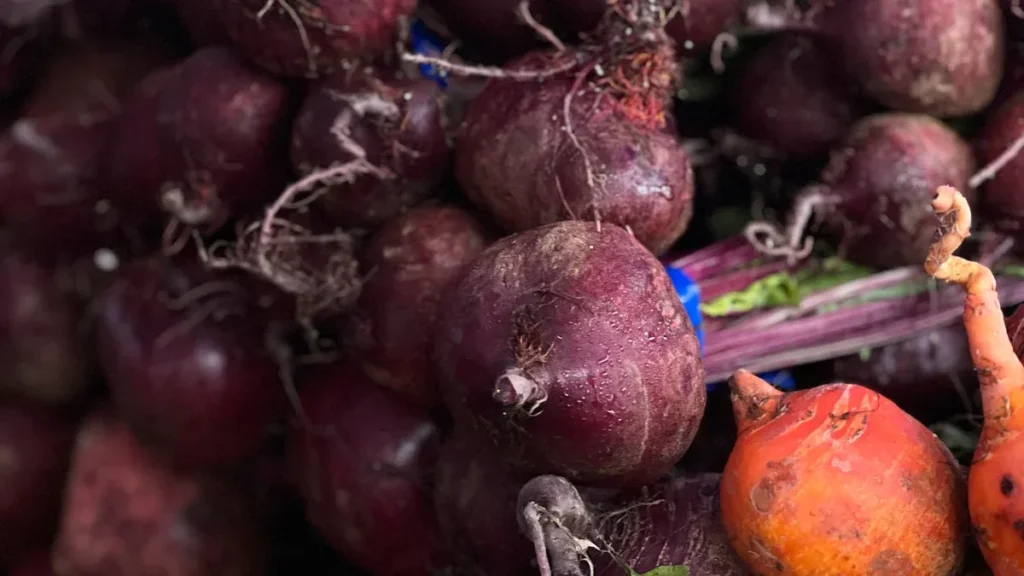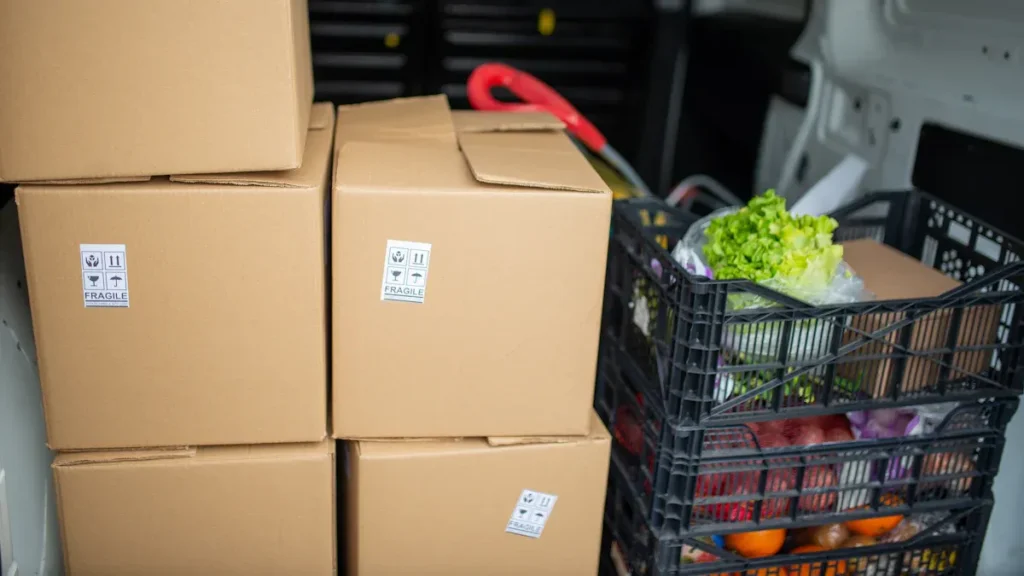
A beetroot box provides a secure way to transport and display beetroot. This box protects each beetroot from bruising and spoilage during shipping. Good packaging keeps beetroot fresh and safe. Many people now seek sustainable options for storing beetroot. Farmers and stores use beetroot boxes to maintain beet quality.
Key Takeaways
Beetroot boxes protect beetroot from damage and keep it fresh during shipping and storage using sturdy materials and smart designs like ventilation holes and compartments.
Intelligent features such as freshness indicators and pH-sensitive films help detect spoilage early, improving food safety and reducing waste.
Sustainable packaging options like biodegradable films and recyclable cardboard support the environment while extending beetroot shelf life and lowering costs.
Beetroot Box Overview

What is a Beetroot Box
A beetroot box serves as a specialized container for the shipping, storage, and display of beetroot. Farmers and distributors use this packaging to keep beetroot safe from damage. The box helps maintain the shape, color, and freshness of each beetroot. Stores often rely on beetroot boxes to present beetroot attractively to customers. This packaging also supports easy handling during transport and storage. The beetroot box plays a key role in active food packaging by extending the shelf life of beetroot and reducing waste.
Materials and Design
Manufacturers create beetroot boxes using sturdy materials that protect beetroot from moisture, impact, and contamination. Most beetroot boxes use strong cardboard as the main structure. Some designs include a polyethylene lining to prevent water from reaching the beetroot. Others use biodegradable films made from plant-based sources. These films help keep beetroot fresh and safe for longer periods. The design of the beetroot box often features ventilation holes. These holes allow air to circulate around the beetroot, which reduces the risk of mold and spoilage. Some boxes have compartments or trays that separate each beetroot, preventing bruising and crushing. The combination of these materials and design elements makes the beetroot box an important part of modern packaging.
Note: The use of biodegradable films in beetroot packaging supports environmental sustainability and reduces plastic waste.
Intelligent Packaging Features
Recent advances in active food packaging have led to the development of intelligent features for beetroot boxes. Some beetroot boxes now include betacyanin-based freshness indicators. These indicators change color when the beetroot starts to lose freshness. This helps retailers and consumers know when the beetroot is at its best. Other beetroot boxes use pH-sensitive films that react to changes in the beetroot’s environment. These films can signal if the beetroot has started to spoil. Intelligent packaging features like these improve food safety and reduce waste. They also help farmers, stores, and consumers make better decisions about beetroot storage and use. The integration of active food packaging and biodegradable films in beetroot boxes shows how innovation can benefit both food quality and the environment.
Feature | Purpose | Benefit |
|---|---|---|
Betacyanin Indicator | Shows freshness level | Reduces spoilage |
pH-Sensitive Film | Detects spoilage conditions | Improves food safety |
Biodegradable Films | Eco-friendly protection | Supports sustainability |
Beetroot Packaging Uses and Benefits

Uses in Food Packaging
Beetroot boxes play a vital role in the food industry. Farmers and processors use these boxes to package fresh, cooked, grated, and powdered beetroot. Each form of beetroot requires special attention to maintain quality. For example, fresh-cut red beet often needs extra protection to prevent bruising and dehydration. Many companies choose trays or pouches for fresh-cut red beet because these options keep the product secure and visible. Cooked beetroot travels well in vacuum-sealed packaging, which locks in moisture and flavor. Grated beetroot often appears in small pouches or trays that allow for easy portioning. Powdered beetroot usually comes in sealed sachets to keep out air and moisture.
Tip: Using the right packaging for each beetroot product helps preserve taste, color, and nutrients.
Retailers display fresh-cut red beet in clear trays or pouches to attract customers. These packaging choices make it easy for shoppers to see the quality of the beetroot. Food service providers also rely on beetroot boxes to store and transport bulk quantities of fresh-cut red beet, cooked beetroot, and grated beetroot. The right packaging method extends shelf life and reduces waste.
Benefits for Freshness and Safety
Proper packaging protects beetroot from physical damage and contamination. The sturdy design of beetroot boxes shields the product during shipping and storage. Ventilation holes in the packaging help control moisture and prevent mold growth. For fresh-cut red beet, this feature is especially important because the product spoils quickly without airflow.
Vacuum-sealed packaging creates a barrier against bacteria and oxygen. This method keeps cooked beetroot and grated beetroot safe for longer periods. Pouches and trays for fresh-cut red beet often include freshness indicators. These indicators show when the beetroot starts to lose quality, helping stores and consumers make better decisions.
Packaging Method | Beetroot Form | Shelf Life Impact | Safety Feature |
|---|---|---|---|
Vacuum-Sealed | Cooked, Grated | Extends by 1-2 weeks | Blocks bacteria and air |
Trays/Pouches | Fresh-cut red beet | Keeps fresh 5-7 days | |
Sachets | Powdered | Preserves for months | Moisture-proof seal |
Beetroot packaging also supports food safety by reducing the risk of cross-contamination. Each box or pouch separates the beetroot from other foods. This separation lowers the chance of spoilage and foodborne illness.
Sustainability Advantages
Sustainable packaging has become a top priority for many producers and retailers. Beetroot boxes often use recyclable cardboard or biodegradable films. These materials break down naturally and reduce plastic waste. Some packaging even uses plant-based films that support a circular economy.
Note: Choosing eco-friendly packaging for beetroot helps protect the environment and meets consumer demand for green solutions.
Sustainable beetroot packaging also saves resources. Lightweight boxes and pouches use less material and energy during production and transport. Many companies design their packaging to be reusable or compostable. This approach reduces landfill waste and supports responsible consumption.
The use of intelligent packaging, such as freshness indicators and pH-sensitive films, further aligns with sustainability goals. These features help reduce food waste by alerting users when beetroot is no longer fresh. As a result, both producers and consumers benefit from longer shelf life and less spoilage.
Comparison with Other Packaging
Traditional Packaging vs Beetroot Box
Traditional packaging for beetroot often uses plastic bags, plain cardboard boxes, or large sacks. These options provide basic protection but do not always keep beetroot fresh for long periods. Plastic bags can trap moisture, which may cause mold. Cardboard boxes without special linings may allow moisture to reach the beetroot. Sacks offer little structure, so beetroot can bruise during transport.
Beetroot boxes improve on these older methods. They use sturdy materials and smart design features. Ventilation holes in the packaging help control moisture. Some beetroot boxes include trays or compartments that prevent bruising. These features help maintain the quality of beetroot from farm to store.
Packaging Type | Protection Level | Freshness Retention | Sustainability | Innovation |
|---|---|---|---|---|
Plastic Bags | Low | Low | Low | Low |
Cardboard Boxes | Medium | Medium | Medium | Low |
Sacks | Low | Low | Low | Low |
Beetroot Box | High | High | High | High |
Unique Features
Beetroot boxes stand out because of their intelligent packaging features. Many use freshness indicators that change color when beetroot starts to spoil. Some boxes use bio-based films that break down naturally, reducing waste. These materials support a circular economy and help protect the environment.
Note: Intelligent packaging helps stores and consumers know when beetroot is still good to eat.
Beetroot boxes also use strong, lightweight materials. This makes them easy to handle and reduces shipping costs. The combination of smart design and eco-friendly materials sets beetroot boxes apart from traditional packaging.
Beetroot boxes protect and preserve beetroot during shipping and display. They offer freshness, safety, and sustainability. Future packaging may include:
Compostable materials from plants or algae
Smart freshness indicators for real-time quality checks
Innovative solutions help keep produce safe and fresh.


